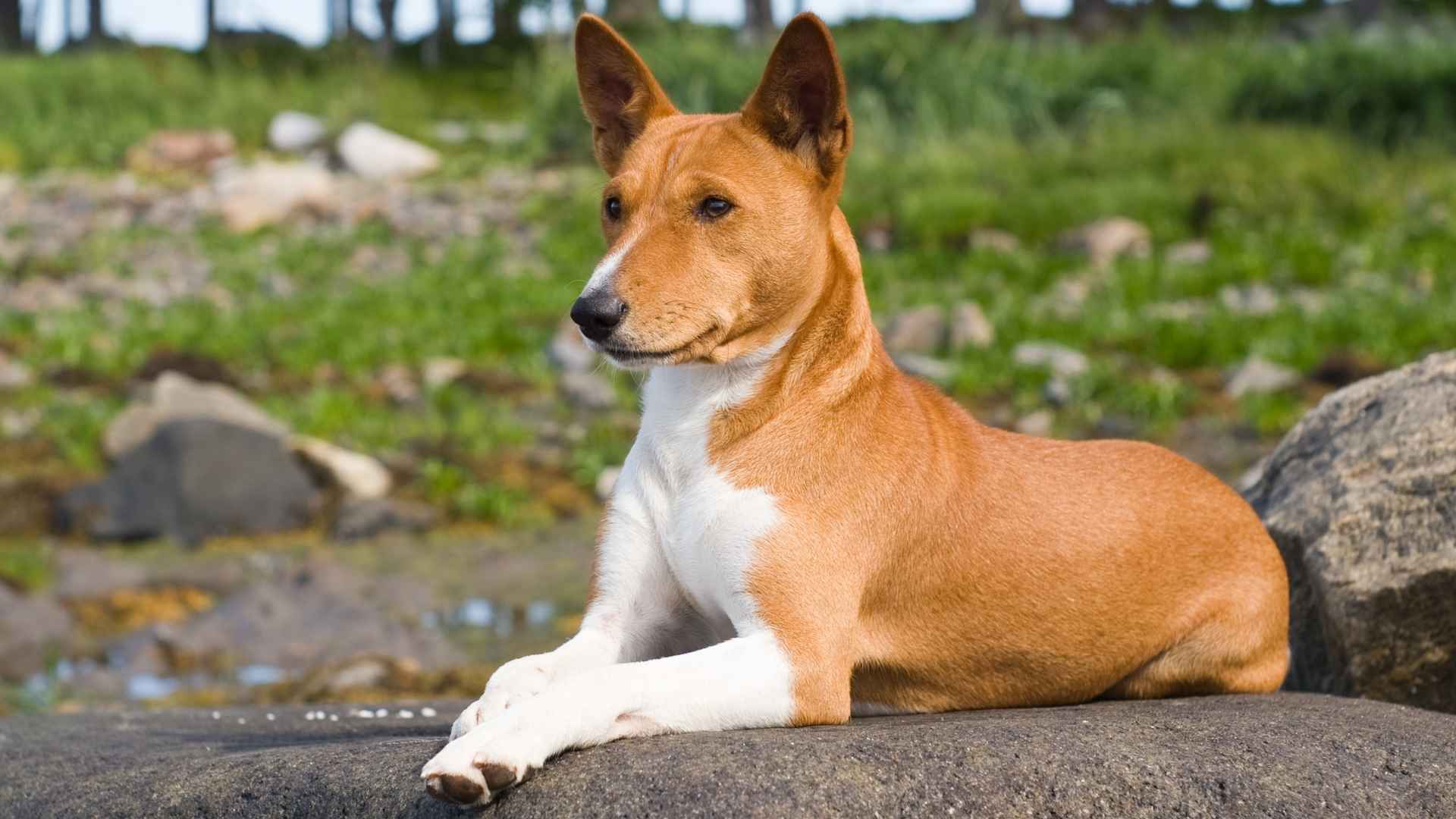Choosing the right dog for your lifestyle is just as important as providing the love and care they deserve. While many breeds crave constant companionship, some are perfectly content enjoying their own company.
These independent dogs can adapt to households where their owners are away for part of the day, making them an ideal choice for busy families, working professionals, or quieter homes like those of retirees.
From petite lap dogs to majestic, long-coated companions, these breeds vary greatly in size, personality, and appearance. What unites them is a calm confidence and low tendency toward separation anxiety. Unlike “Velcro dogs” that follow you from room to room, these pups are more likely to curl up in their favorite spot or watch the world go by until you return.
Of course, even the most independent breeds still need attention, training, and stimulation. The difference is, they won’t see your absence as a crisis — instead, they’ll treat it as peaceful alone time to rest and recharge.
Best Dog Breeds That Prefer Their Own Time
1. Lhasa Apso
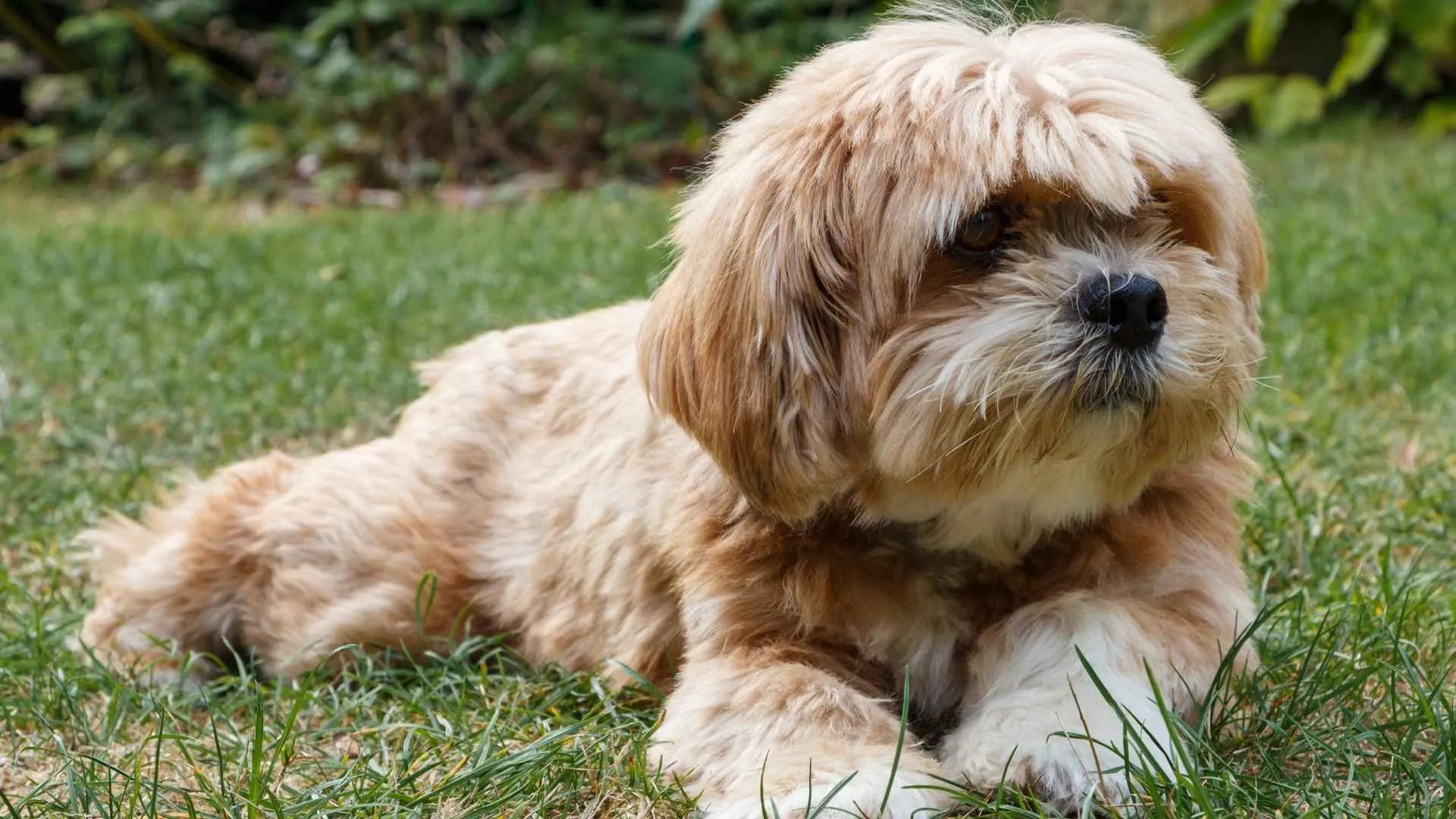
One of the world’s most ancient breeds, the Lhasa Apso was developed in Tibet over 2,000 years ago to serve as a loyal guardian of monasteries and palaces.
Highly valued for their keen senses and protective nature, they were often bestowed as treasured gifts to honored guests, symbolizing peace and prosperity. Their long, flowing coat, adapted for the cold Himalayan climate, adds to their dignified presence and requires regular grooming to maintain its beauty.
Quick Facts:
Group: Non-Sporting
Height: 10–11 inches
Weight: 12–18 pounds
Life Span: 12–15 years
Distinct Feature: Flowing double coat, low shedding
Origin: Tibet
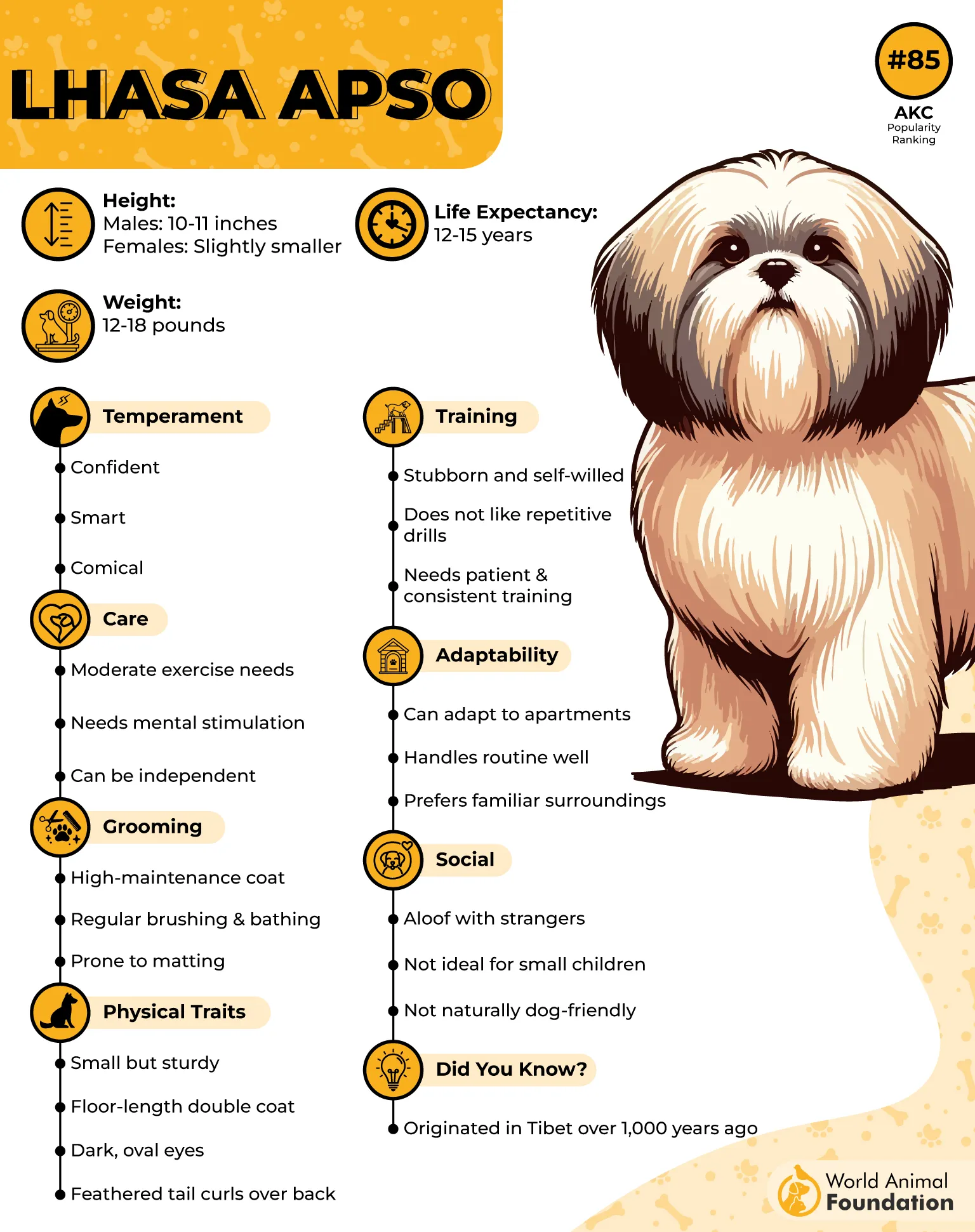
Temperament
Independent yet deeply loyal, the Lhasa Apso is naturally alert and cautious with strangers while affectionate toward its family. PetMD says this small breed is now a wonderful choice for families.
They’re comfortable spending short periods alone, often entertaining themselves quietly indoors. Early socialization is key to balancing their watchdog instincts, and they thrive when given a mix of structured play and peaceful downtime. Calm but spirited, they offer a unique blend of companionship and self-reliance.
Fun Fact: The breed’s name translates to “Bearded Lion Dog” in honor of its appearance and guardian heritage.
2. Great Pyrenees
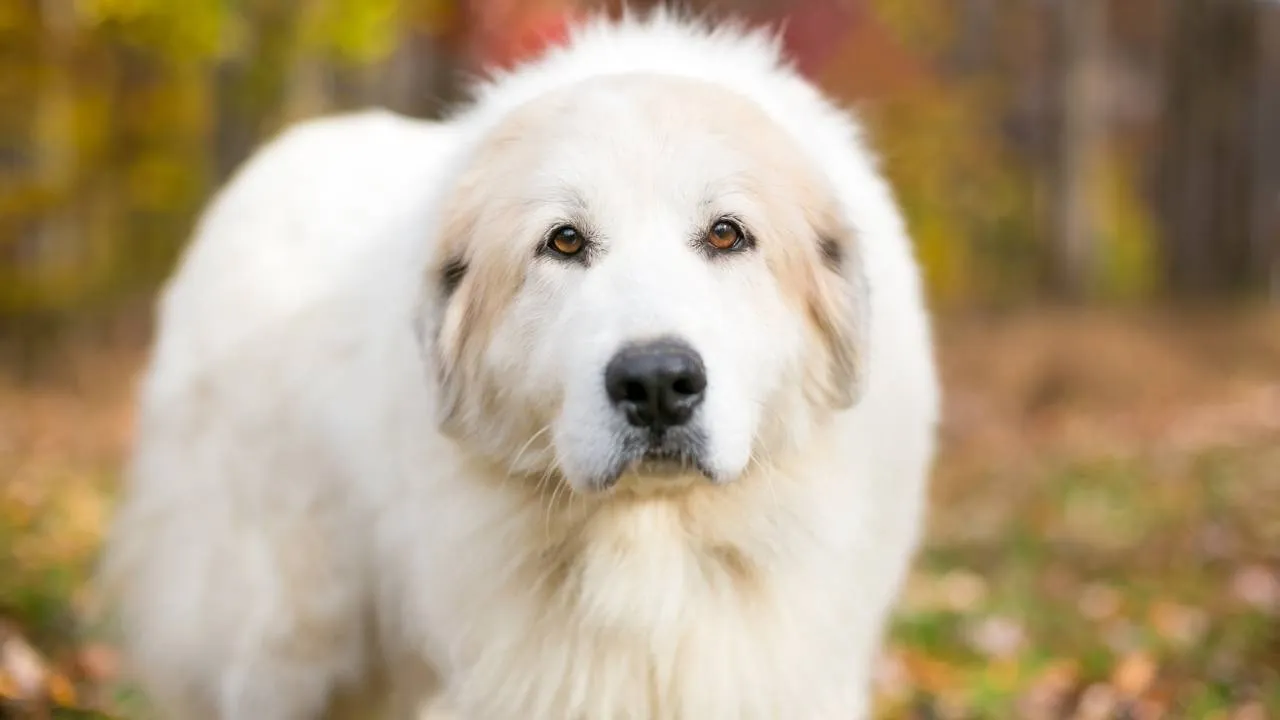
Also known simply as the “Pyr,” the Great Pyrenees is a majestic mountain breed developed to guard livestock on rugged, snowy slopes. Originating in the Pyrenees Mountains between France and Spain, they were prized for their ability to work independently for days, protecting flocks from wolves and other predators.
These powerful dogs can stand up to 32 inches tall and often weigh well over 100 pounds. Hills Pet says the Great Pyrenees is a very large, muscular, double-coated dog.
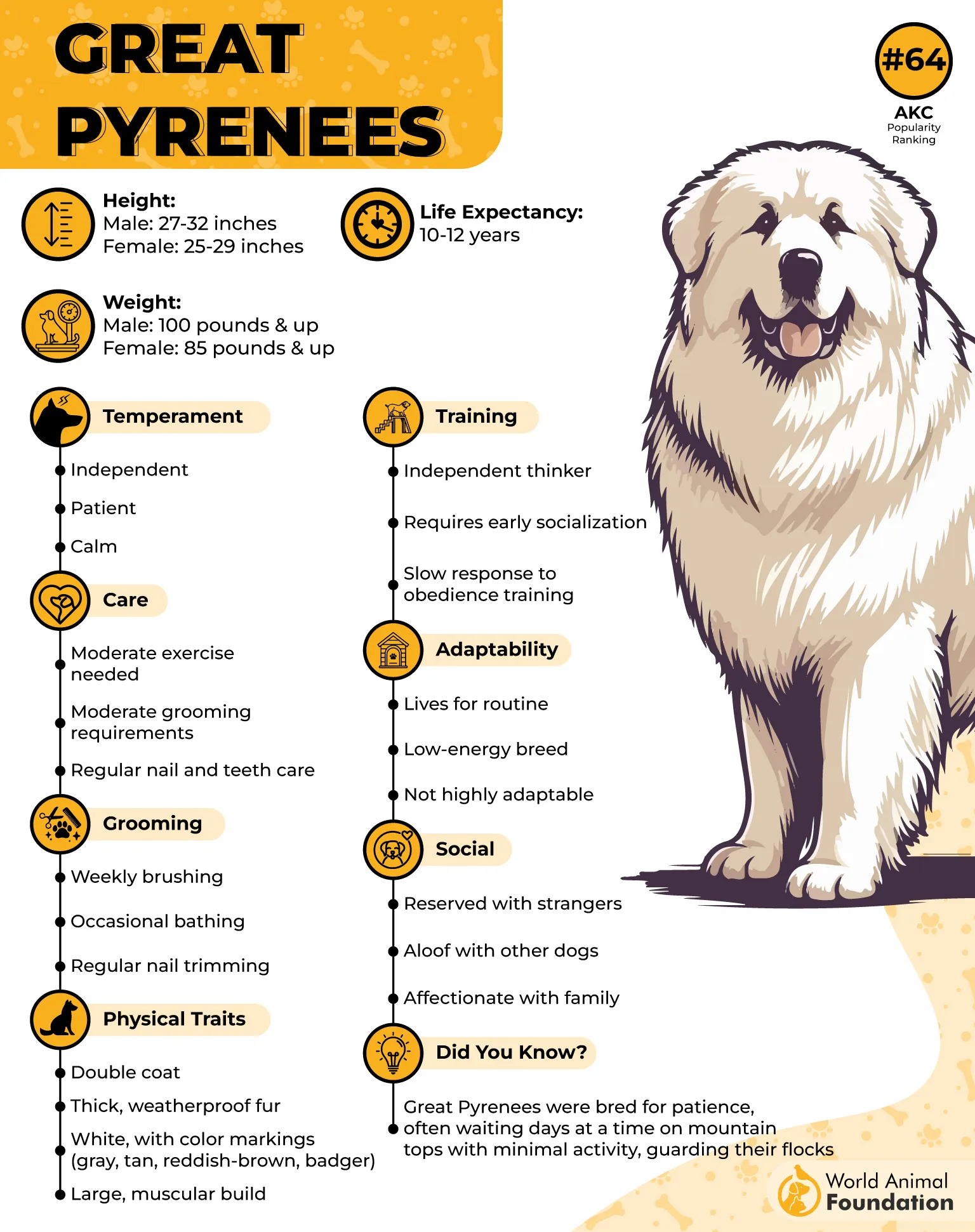
Their lush, weather-resistant coat is typically all white, though some have markings in shades of gray, tan, reddish-brown, or badger. Despite their imposing size, they are gentle and affectionate with loved ones.
Quick Facts:
Group: Working
Height: Up to 32 inches
Weight: 100+ pounds
Life Span: 10–12 years
Distinct Feature: Thick, weatherproof white coat
Origin: Pyrenees Mountains
Temperament
These guard dogs embody calm confidence, balancing gentleness with vigilant protectiveness. Bred for solitary work, they are comfortable spending time alone and can be reserved yet deeply loyal to family.
Their strong guarding instincts mean early socialization and consistent training are essential. While not overly active, they enjoy purposeful tasks, like patrolling a yard or engaging with puzzle toys to keep their intelligent minds stimulated.
Fun Fact: Historically, Great Pyrenees were so valued that the French nobility adopted them as official royal dogs in the 17th century.
3. Chihuahua
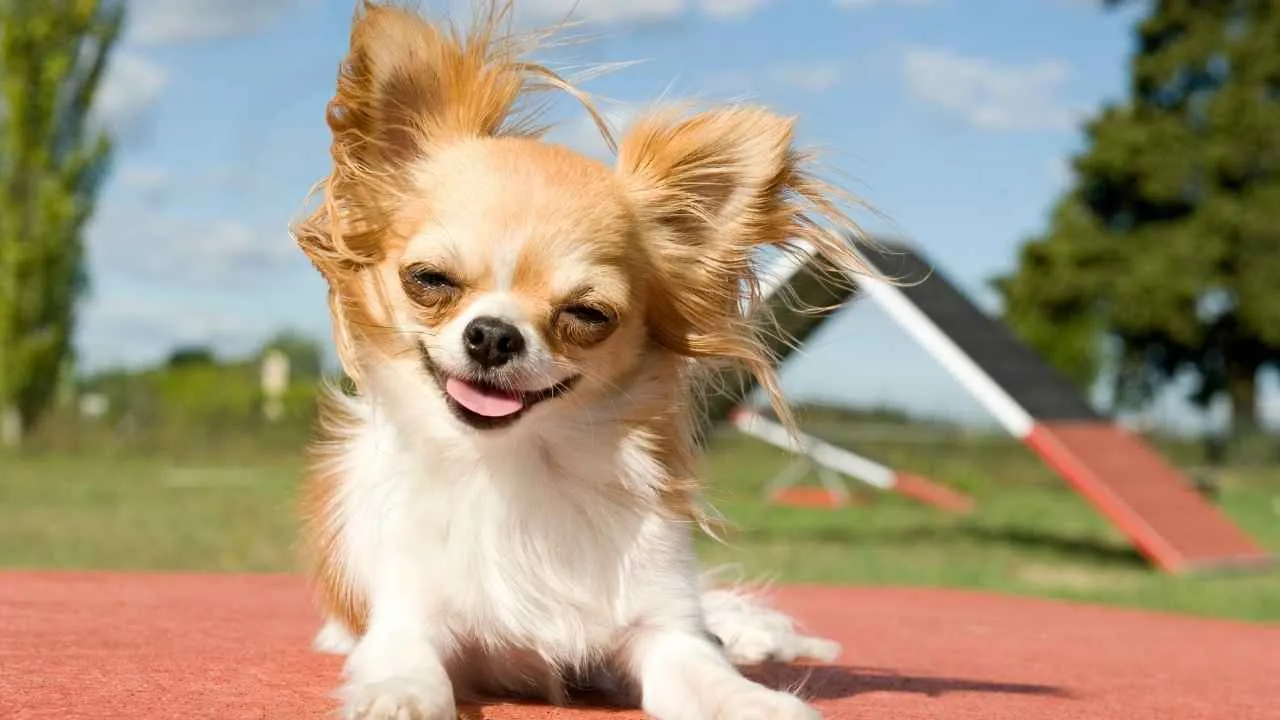
The Chihuahua, Mexico’s national symbol, is a small yet spirited breed with roots tracing back to ancient pre-Columbian civilizations. Britannica says the Chihuahua’s exercise needs can be met in a small yard or even within the open space of an apartment.
Known for their terrier-like confidence, they rarely exceed 6 pounds but carry themselves with remarkable poise. Their signature features include a rounded “apple” head, large expressive eyes, and erect ears.
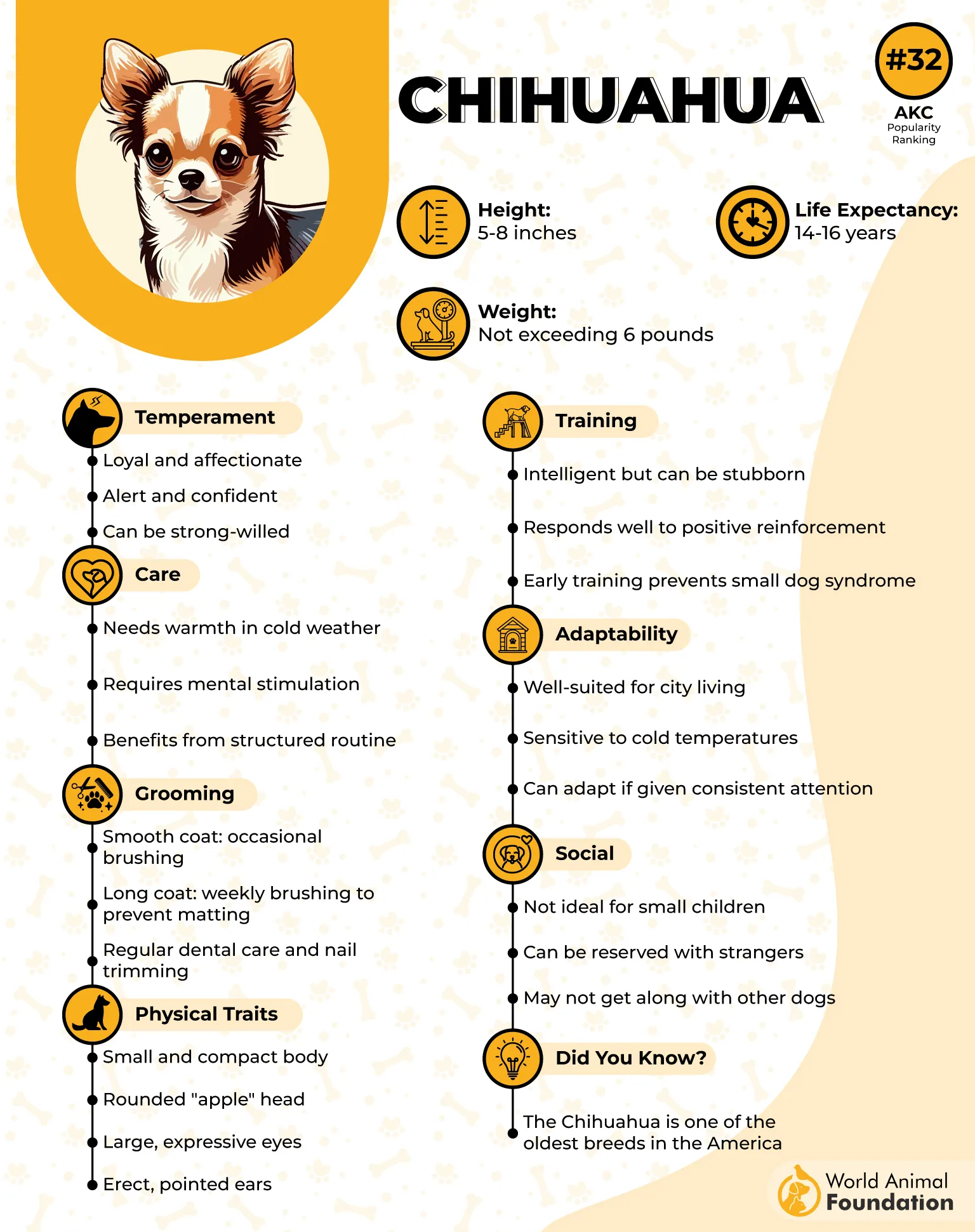
Coat varieties can be long or short, with a wide range of colors and patterns. Compact and portable, Chihuahuas are well-suited for city living and can adapt easily to small homes or apartments. With a lifespan of 14–16 years, they are a long-term companion for dedicated owners.
Quick Facts:
Group: Toy
Height: 5–8 inches
Weight: Up to 6 pounds
Life Span: 14–16 years
Distinct Feature: Apple-shaped head, luminous eyes
Origin: Mexico
Temperament
These tiny dogs possess a bold personality and are deeply devoted to their families. They enjoy companionship but also exhibit a degree of independence, making them comfortable alone for short periods.
Early training and socialization are essential to manage their protective instincts and occasional feistiness. They tend to bond closely with one or two people, often shadowing them at home, yet they can also entertain themselves with toys or rest quietly in a sunny spot.
Fun Fact: Chihuahuas are one of the world’s oldest dog breeds in the Americas, with ancestors believed to be companions of the ancient Toltec civilization.
4. Basset Hound
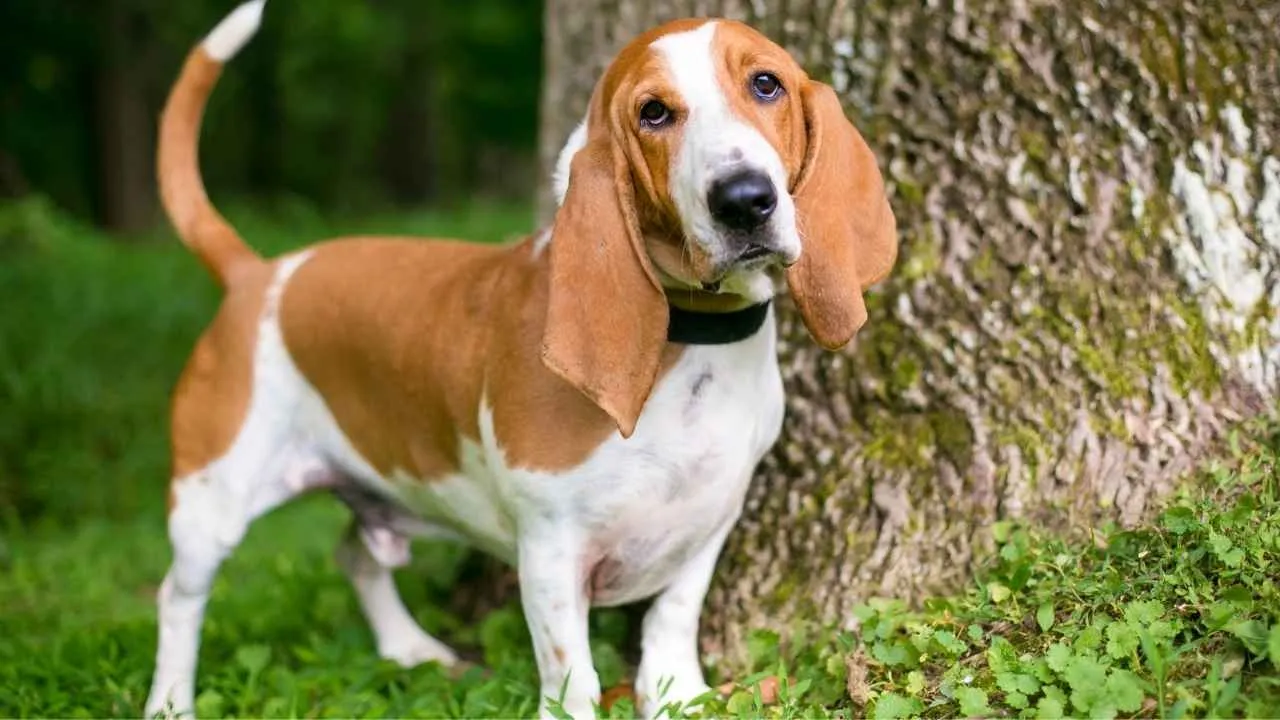
The Basset Hound, with its long ears, droopy eyes, and endearing expression, is one of the most recognizable breeds in the world. Originally developed in France for scent tracking, these dogs excelled at trailing small game due to their incredible sense of smell—second only to the Bloodhound.
They stand no higher than 14 inches at the shoulder but are solidly built, often weighing 50–70 pounds. Their heavy bone structure, sturdy legs, and deep chest give them remarkable stamina for long, steady tracking sessions. Despite their short coat, they shed quite a bit and benefit from regular brushing to control loose hair.
Quick Facts:
Group: Hound
Height: Up to 14 inches
Weight: 50–70 pounds
Life Span: 10–12 years
Distinct Feature: Long, velvety ears; strong scenting ability
Origin: France
Temperament
Basset Hounds are calm, easygoing dogs with a charmingly stubborn streak. They are independent thinkers, which makes training a challenge unless positive reinforcement—especially treats—is involved.
While affectionate with their families, they are content to spend time alone, often choosing a comfortable spot for a nap.
Originally bred to hunt in packs, they get along well with other dogs and are generally friendly with people, though they may be slow to respond to commands if they see no immediate reason.
Fun Fact: A Basset Hound’s long ears help sweep scents toward its nose, enhancing its exceptional tracking ability.
5. Scottish Terrier
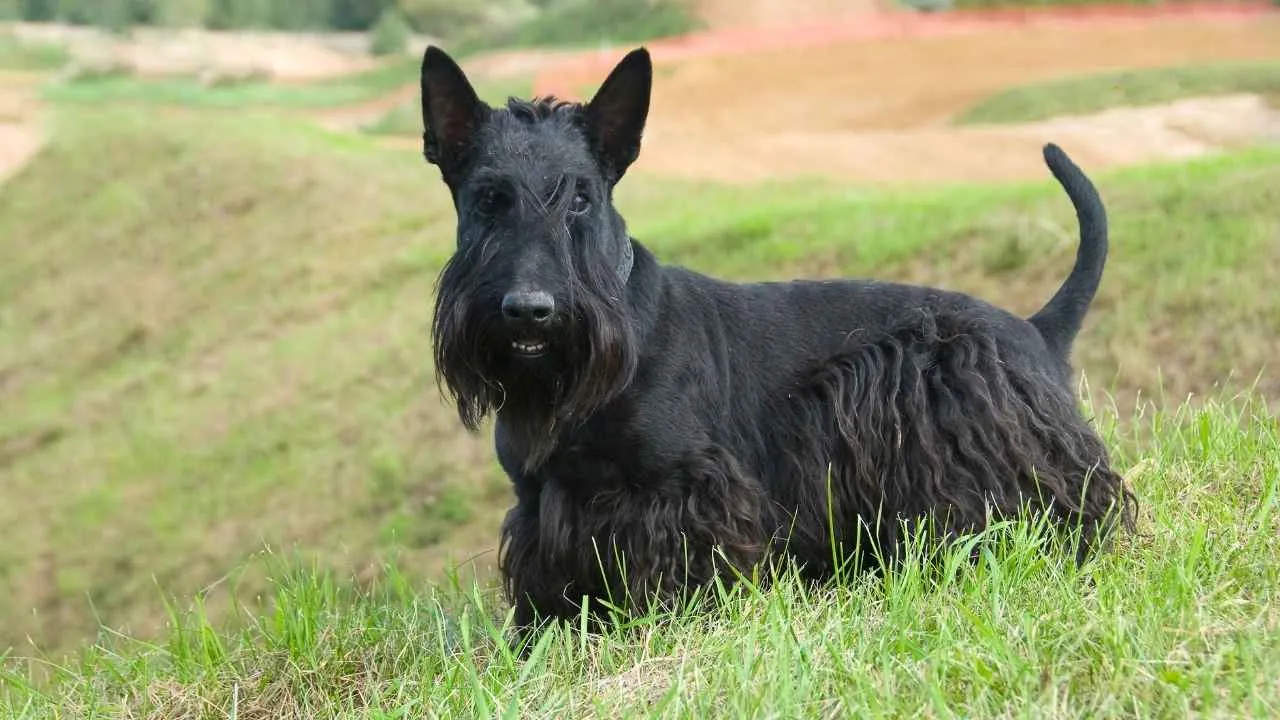
The Scottish Terrier, affectionately called the “Scottie,” hails from Scotland and has long been admired for its bold spirit and distinctive profile. Known as “the Diehard” for its determined nature, this compact terrier stands about 10 inches tall and weighs 18–22 pounds.
It has a sturdy build, erect ears, a wiry topcoat with a soft undercoat, and signature furnishings on the beard, legs, and body. Coat colors include black, wheaten, or brindle. With a lifespan of 11–13 years, the Scottie combines old-world charm with modern-day companionship.
Quick Facts:
Group: Terrier
Height: ~10 inches
Weight: 18–22 pounds
Life Span: 11–13 years
Distinct Feature: Wiry coat with beard and leg furnishings
Origin: Scotland
Temperament
Scottish Terriers are confident, independent, and fiercely loyal to their families. They can handle alone time well, making them suitable for owners with busier schedules. Training should be kept brief and engaging to match their sharp intelligence and avoid boredom.
True to their terrier heritage, they can be scrappy with other dogs and have a strong prey drive toward small animals. Early socialization is essential for shaping polite interactions. Their dignified demeanor masks a playful side that surfaces with those they trust.
Fun Fact: The Scottish Terrier gained Hollywood fame as “Jock” in Disney’s Lady and the Tramp, capturing the breed’s dignified yet protective nature.
6. Greyhound
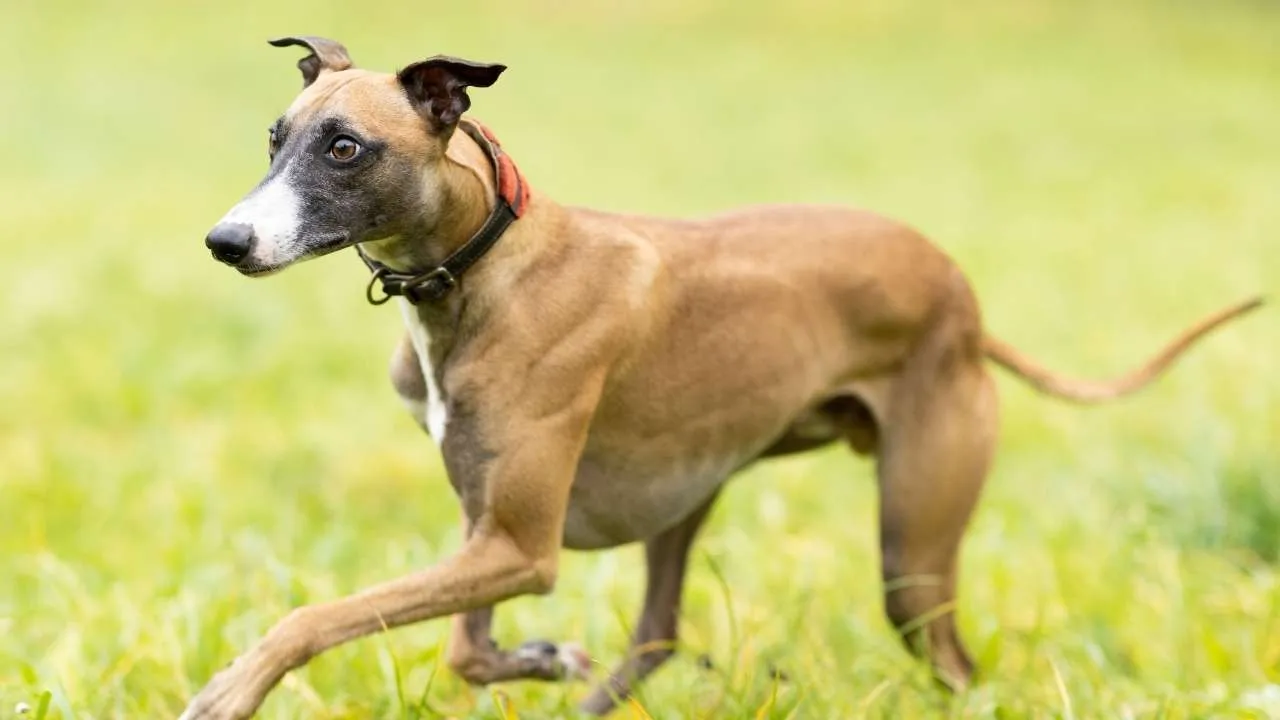
The Greyhound, celebrated as one of the fastest dog breeds, has captivated humans for thousands of years with its elegance and speed. Revered by kings, artists, and poets, this ancient sighthound was originally bred for coursing game and racing.
Its distinct “inverted S” silhouette—deep chest, narrow waist, and long legs—maximizes aerodynamic performance, while the shock-absorbing pads on its feet allow for incredible bursts of speed over 40 mph.
Greyhounds typically stand 27–30 inches tall, weigh 60–70 pounds, and live 10–14 years. Their short, fine coat requires minimal grooming, but they benefit from extra warmth in colder climates.
Quick Facts:
Group: Hound
Height: 27–30 inches
Weight: 60–70 pounds
Life Span: 10–14 years
Distinct Feature: Streamlined build for sprinting
Origin: Ancient Egypt & Mediterranean regions
Temperament
Despite their athletic prowess, Greyhounds are calm, gentle, and affectionate at home. They often enjoy retreating to a quiet bed for solitude, making them ideal for owners who value a dog with an independent streak.
Naturally polite and adaptable, they tend to get along with children, seniors, and even other pets. However, due to their strong prey drive, they should not be off-leash in open areas. Their independent thinking means they prefer problem-solving on their own rather than constant direction.
Fun Fact: Retired racing Greyhounds often transition beautifully into family life, swapping the track for a cozy couch.
7. Basenji
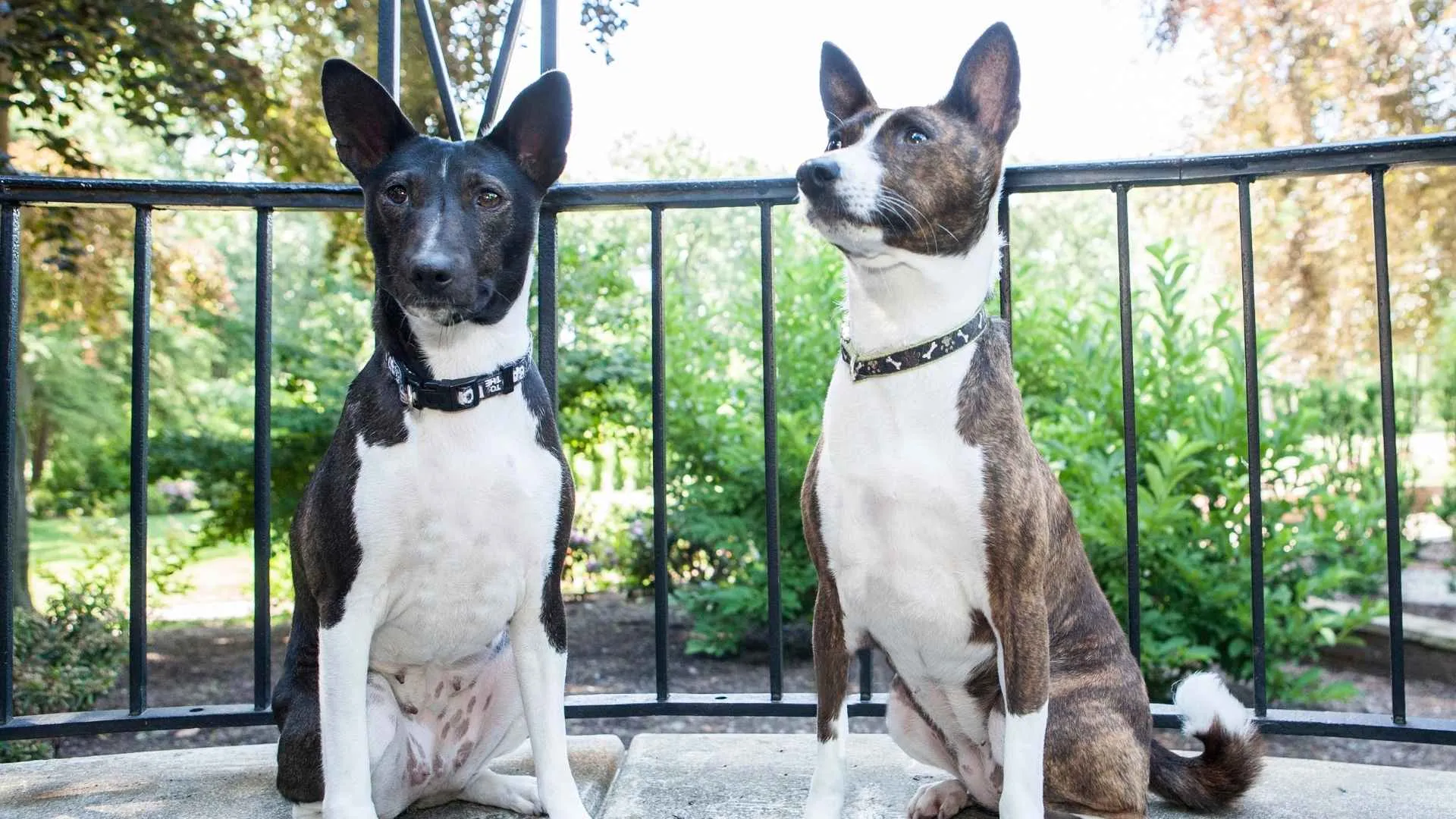
The Basenji, often called Africa’s “Barkless Dog,” is a small but athletic hound with roots tracing back thousands of years to Central Africa. Originally bred for hunting in the dense forests, these agile dogs are known for their sharp senses and graceful, effortless movement.
Standing about 16–17 inches tall and weighing 22–24 pounds, they feature a short, sleek coat, a tightly curled tail, and a distinctive wrinkled forehead.
One of their most unique traits is their inability to bark; instead, they make an expressive yodel-like sound. Their self-grooming habits and minimal odor make them appealing to those who value a tidy pet.
Quick Facts:
Group: Hound
Height: 16–17 inches
Weight: 22–24 pounds
Life Span: 13–14 years
Distinct Feature: “Barkless” yodel, curled tail
Origin: Central Africa
Temperament
Independent and catlike in personality, the Basenji is alert, intelligent, and often reserved with strangers. They can entertain themselves for short periods, making them one of the more self-sufficient breeds.
However, their high energy and curiosity mean they thrive when given daily mental challenges and physical outlets. They respond best to patient, positive training, and secure fencing is essential due to their strong prey drive.
Fun Fact: Ancient Egyptian art depicts Basenji-like dogs, suggesting this breed’s lineage dates back over 5,000 years.
8. Shiba Inu
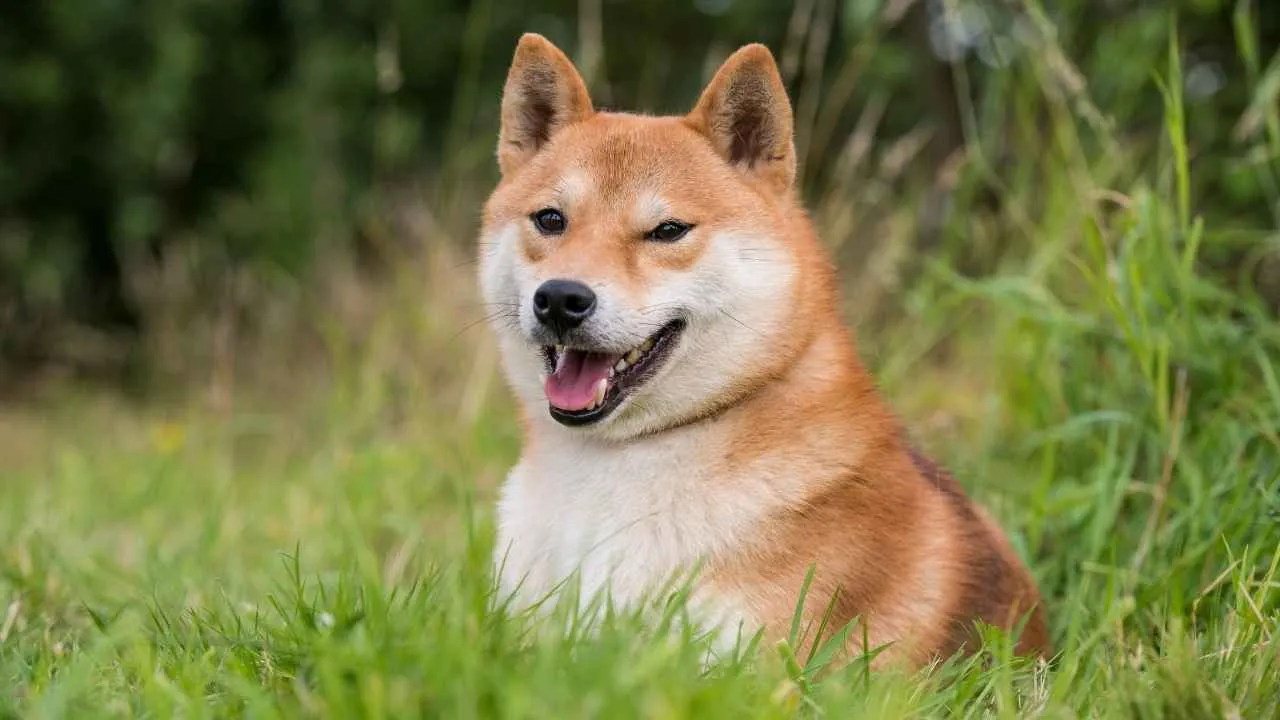
The Shiba Inu, Japan’s most popular companion dog, is a compact, well-muscled breed with roots as a skilled hunter in the country’s rugged mountains. Introduced to the United States about 60 years ago, they’ve steadily gained popularity in the West.
Their alert expression, smooth stride, and distinctive foxlike appearance—highlighted by red, red sesame, or black and tan coats with crisp white markings—set them apart.
Standing around 13.5–16.5 inches tall and weighing 17–23 pounds, Shibas are sturdy yet agile, built for both endurance and speed. This ancient breed belongs to the Non-Sporting Group and typically enjoys a life span of 13–16 years.
Quick Facts:
Group: Non-Sporting
Height: 13.5–16.5 inches
Weight: 17–23 pounds
Life Span: 13–16 years
Distinct Feature: Foxlike face, curled tail
Origin: Japan
Temperament
These independent dog breeds are spirited and confident. Their personality is often compared to that of cats—aloof with strangers but affectionate with their family.
They enjoy their own space, making them one of the more self-reliant breeds, yet they require outlets for their high energy to avoid anxiety or excessive vocalization.
Interactive play sessions, outdoor exploration, and mental challenges keep them engaged. Early training and socialization are key to ensuring their independence doesn’t turn into stubbornness.
Fun Fact: The name “Shiba Inu” roughly translates to “brushwood dog,” likely referring to the terrain where they once hunted.
Conclusion
Finding the right match for your lifestyle means choosing a breed that is comfortable on its own without sacrificing affection or loyalty. While some dogs thrive on constant interaction, others—like the Boston Terrier or Miniature Schnauzer—are perfectly content being left alone for a few hours.
These breeds can adapt to a relaxed schedule, enjoying quiet time at home while still being wonderful companions when their human companion returns. Adult dogs in particular may be more comfortable with solo time, as they’ve often outgrown the constant attention-seeking phase of puppyhood.
Even independent breeds still need mental and physical stimulation to stay happy. Trips to the dog park, puzzle toys, and walks provide as much exercise as they require without overwhelming them. While these dogs tend to enjoy their own devices, they also appreciate companionship in moderation. The key is balance—ensuring your dog’s home offers both the space to rest and the moments of engagement that keep them thriving.


